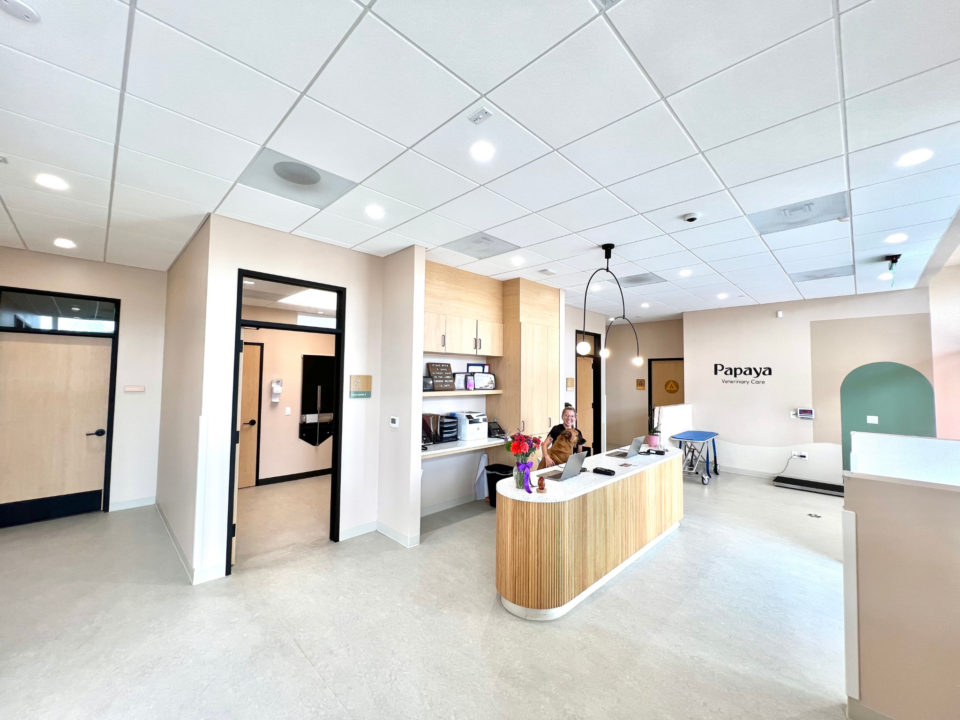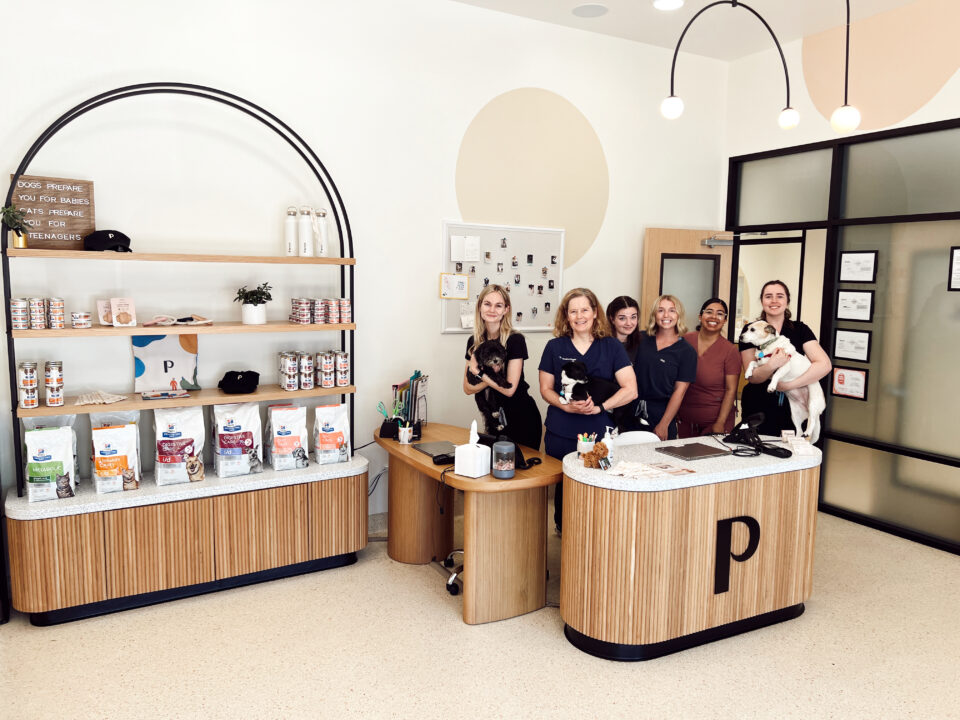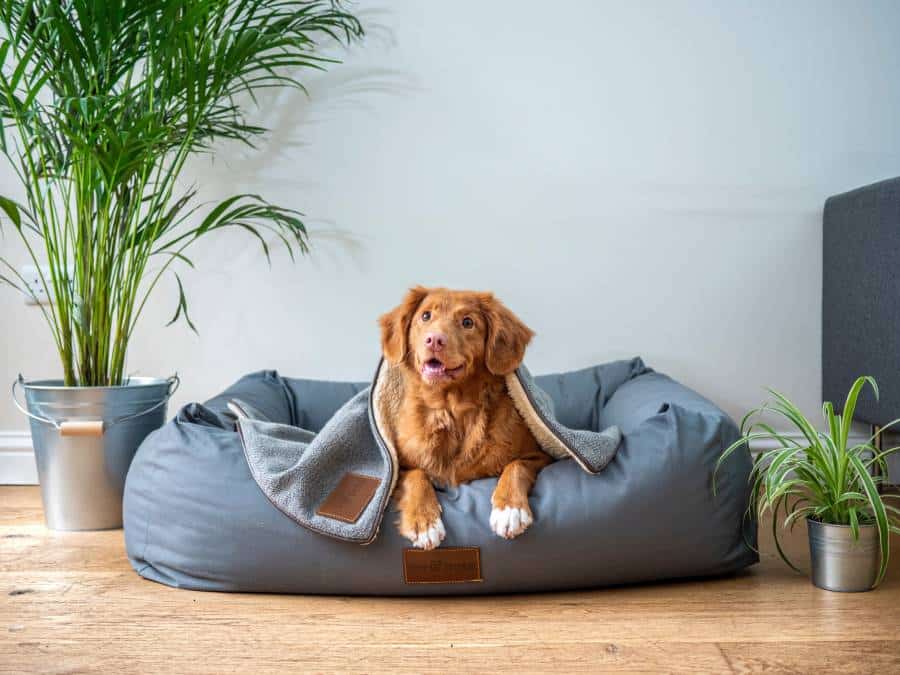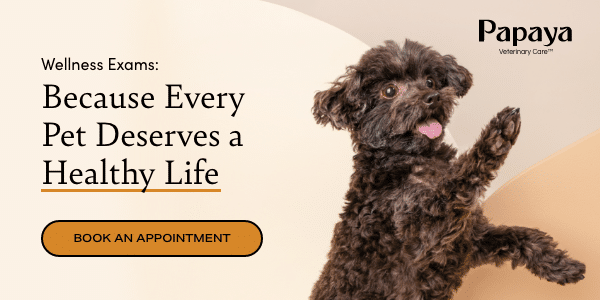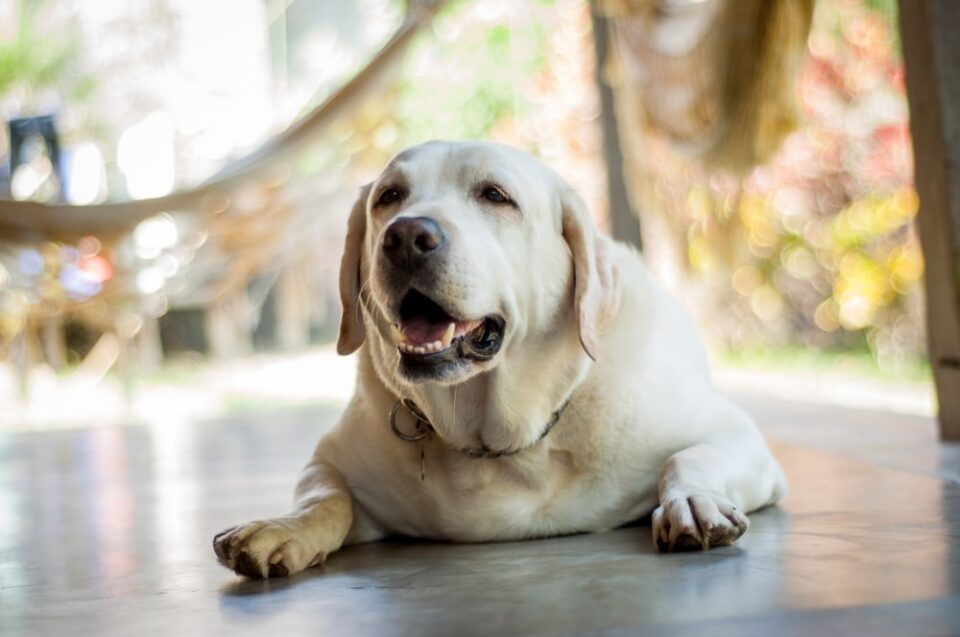Pet Care
5 min read
My pet is scared of the vet…What can I do?
Published on Aug 1, 2023

Taking your pet to the vet can be challenging for many reasons. First, they might be sick or injured and feeling especially vulnerable or protective. Next, we can’t just explain to our beloved pets what we’re doing or why we’re doing it—and totally normal procedures like clipping their nails, checking their teeth, or taking their temperature can seem invasive and scary. Finally, a pet that associates the vet with fear will do everything they can to avoid getting their routine checkup.
A stressed dog or cat might act out of character, with behaviors such as hiding, growling, or barking. It can make administering care difficult or even dangerous for the veterinary team and your pet, which is why removing fear, anxiety, and stress (FAS) from the experience is of paramount importance. We work closely with pet parents to create a calm and enjoyable experience for everyone (animals and humans!) involved.
Here are some of our top tips for creating a friendly—not fearful—association with the vet.
Before the day of your vet appointment.
Your pet doesn’t need to be sick to start preparing for a trip to the vet. You can take these steps well before your next appointment for an easier time when getting to the vet is more urgent.
- Get acquainted with the cat carrier – Coaxing an anxious feline into a carrier can be a steep hurdle in getting to the vet. Many find it helpful to leave the carrier out (not tucked away in a closet), so their cat can explore it at their own pace and get accustomed to its presence. Some cats respond well to a darker cubby-like carrier that feels more secure. Here are some other helpful tips.
- Go for a joy ride – Some dogs and cats have no problem hopping in the car for an adventure. Others find being in a moving vehicle absolutely terrifying. Consider taking your pet for gradually longer joy rides in the car to special destinations like the store to pick up treats or to a local park for a game of fetch. Queue up a soothing playlist because studies show animals enjoy some tunes, too.
On the way to the vet.
When a cat or dog has an unpleasant or traumatic experience, they take a mental picture of their surroundings. They’ll remember specific faces, smells, and sounds. Some animals will even recognize the route to the vet’s office, yowling or whining all the way.
One of the first rules is to avoid becoming agitated yourself. Dogs and cats quickly pick up on your signs of distress, and if you’re nervous, they’ll be nervous too. Foster a calming atmosphere in the car with soft music or even talking in a low, gentle voice to your pet (speaking in a loud or high-pitched voice can increase FAS). Bringing treats along for the ride can also create a sense of safety.
It’s also recommended to avoid feeding your pet before their appointment. That way, they’ll be more food motivated and respond better to treats than if they have a full stomach.
Swaddling a stressed cat in a blanket or towel before putting them in their carrier can help them feel more at ease. (We call it a purr-ito.)
Animal pheromones or non-drowsy calming supplements work wonders for some pets. Some companies make meal toppers or treats that are infused with non-toxic, relaxing adaptogens and nootropics. There are myriad sprays and drops (such a Feliway, a popular cat pheromone) to alleviate stress around a vet visit. You can even try applying pheromones to the interior of your car.

At the vet.
Once you get to the vet, communication is key. If your pet is still displaying signs of FAS—such as panting or vocalizing—let the vet receptionist know right away. You might be able to wait in your car until the exam room is ready. Even better, fill out your paperwork ahead of time to reduce waiting time.
Depending on the procedure, your pet might feel more comfortable on your lap than on an exam table. Again, you can let your veterinary care team know that your pet is feeling stressed or nervous; they may recommend ways to reduce FAS, such as offering treats, playing with a toy, or simply going slow and paying attention to how your pet reacts.
If your pet is extremely agitated during the exam, the vet may recommend sedation. Sedatives are a safe and effective option for an animal to receive care. Alternatively, it may be best to pause or reschedule the appointment, depending on your pet’s condition.
After the vet.
Coming home after the vet can present another challenge. Some animals may still feel stressed, disoriented, or exhausted from the appointment, potentially redirecting their frustration toward you or other animals in your home. It’s important to give your pet plenty of time and space to recover, such as in a quiet room away from other animals or people, with food, water, and a litter box if needed.
Once they’re feeling more comfortable, you can offer treats or playtime. Before too long, they’ll be back to their regular selves.
Unfortunately, many pets associate the vet with fear and anxiety. Breaking this association and creating a more favorable relationship takes time and patience on everyone’s part, including the pet owner and the vet. We provide compassionate and quality veterinary care that’s suited to even the most skittish cats and dogs.
Navigating the world with a nervous pet can be a challenging task, especially when it comes to vet visits. Our four-legged friends don’t understand that these trips are for their own health and well-being. But, armed with a little patience and the right set of tips, you can help your furry friend associate these visits with positivity rather than fear. And remember, you’re not in this alone. We’re here to provide your pet with the utmost care and comfort during their visit, ensuring that every experience is as stress-free as possible. Don’t wait any longer; help your pet take the first step towards overcoming their fear. Book an appointment with Papaya Vet Care today, and let’s turn their vet visit anxiety into a tale of triumph together!

